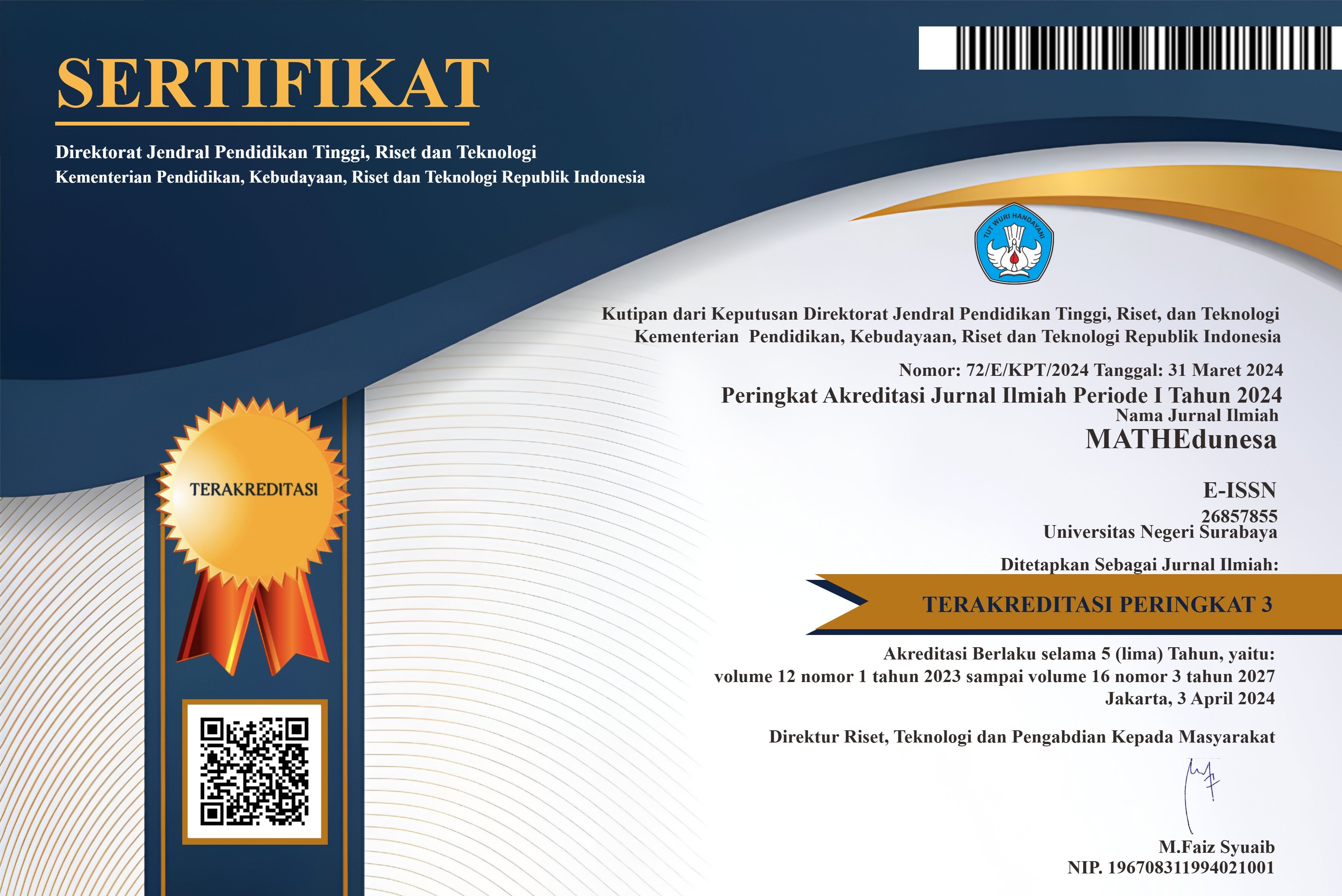Berpikir Relasional Siswa SMP dalam Memecahkan Masalah Bangun Ruang Sisi Datar ditinjau dari Gaya Kognitif
DOI:
https://doi.org/10.26740/mathedunesa.v13n3.p916-939`Abstract
In the process of problem solving, a student will engage in the activity of thinking and connecting the information in his mind. One kind of thinking that can help the problem solving process and find the right solution is relational thinking. The aim of this research is to describe junior high school students relational thinking using cognitive styles field dependent and field independent in solving polyhedron problems. This research is qualitative descriptive research carried out in class VIII-B of Public Junior High School 1 Surabaya, even semester of the 2022/2023 academic year. This research was carried out on students who had received geometry material, especially regarding the volume of polyhedron. The subjects in this research were two students, namely students field dependent (FD) and field independent (FI) with equivalent mathematical abilities. This research used instruments in the form of the GEFT test, mathematics ability test, problem solving test, and interview guide. The results of this research show that field dependent and field independent students when understanding the problem, FD and FI students carry out relational thinking activities well, namely identifying the information that exists in understanding the problem given and explaining the relationship between the information in the problem and the knowledge that the students have. and related to the problem given. In the step of making a problem solving plan, FD and FI students can determine and choose the most suitable strategy for solving the problem according to the information known and the knowledge the students have. Next, FD and FI students can carry out problem solving plans. At this stage, FD students carry out problem solving according to the strategy and produce the right answer, while FI students experience errors in substituting values and calculation errors to find the final result on each question. In the step of re-examining problem solving, FD and FI students can build connections between the answers and the problems given by making verbal conclusions regarding the results related to the answers to the problems given. The FD student's conclusion was correct, while the FI student's conclusion was incorrect because they experienced a calculation error in the previous stage. One of the causes of mistakes made by FI students is that FI students do not carry out activities to double-check the problem solving steps. Meanwhile, FD students carried out activities to double-check each step in solving the problem.
Downloads
Downloads
Published
Issue
Section
 Abstract views: 78
,
Abstract views: 78
, PDF Downloads: 101
PDF Downloads: 101




